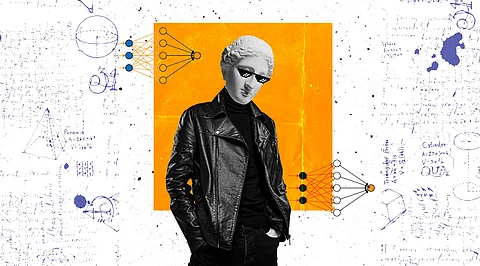

As we go through the topic of artificial intelligence we often come across several topics like neural networks. Neural networks are subsets of machine learning. In this article, we will go through the neural networks in artificial intelligence. This beginner's guide to neural networks will help you clearly understand the different categories of AI.
Neural networks are also known as simulated neural networks which are a subset of machine learning that forms the foundation of deep learning algorithms. Their structure and names are inspired by the design of the human brain. Neural networks are designed to mimic how biological neurons communicate with one another.
Artificial neural networks are made up of node layers and each layer of them has an input layer, hidden layers, and an output layer. Each artificial neuron or node is linked with another and has its threshold and weight. If the output of an individual node exceeds the specified threshold value, then the is activated and begins to send data to the next layer network. or else, data is not passed to the next network layer.
Neural networks use training data to improve and learn their accuracy over time. However, as these learning algorithms are tuned for accuracy, they become powerful tools in artificial intelligence and computer science allowing us to classify and cluster data at high speeds. When compared to manual identification by human experts, speech recognition or image recognition tasks can take minutes rather than hours. Google's search algorithm is well-known for neural networks.
Neurons, synapses, weights, biases, propagation functions, and a learning rule are all components of a typical neural network. Neurons will receive an input p j(t) from predecessor neurons with an activation a j(t), a threshold theta j, an activation function f, and an output function f out. Connections are made up of connections, weights, and biases that govern how neuron $i$ transfers output to neuron $j$.
Propagation computes the input, outputs the output, and adds the function of the preceding neurons to the weight. The learning of a neural network essentially refers to adjusting the free parameters, such as weights and biases. The learning rule changes the weights and thresholds of the network's variables. There are three basic sequences of events in the learning process. Which includes:
A new environment simulates the neural network.
As a result of this simulation, the free parameters of the neural network are altered.
Because of the changes in its free parameters, the neural network then responds to the environment in a new way.
Supervised learning is how neural networks learn. Supervised machine learning is comprised of an input variable x and a desired output variable y. In this section, we introduce the concept of an environmental educator. As a result, we can say that the teacher has both an input and output set. The neural network is completely unaware of its surroundings. The input is shown to both the teacher and the neural network, and the neural network produces an output based on the input. This output is then compared to the desired output of the teacher, and an error signal is generated at the same time. The network's free parameters are then gradually adjusted to minimise error. When the algorithm achieves an acceptable level of performance, the learning process comes to an end. Unsupervised machine learning uses input data X but produces no output variables. The goal is to model the underlying structure of the data to learn more about it. The terms classification and regression are used to describe supervised machine learning. Clustering and association are the keywords for unsupervised machine learning.
There are seven types of neural networks
The first type of perceptron has three or more layers and employs a nonlinear activation function.
The second type of neural network is the convolutional neural network, which employs a multilayer perceptron variation.
The third type of neural network is the recursive neural network, which uses weights to make structured predictions.
The fourth is a recurrent neural network, which connects neurons in a directed cycle. The long short-term memory neural network employs the recurrent neural network architecture and lacks an activation function.
The final two modules are sequence-to-sequence modules that use two recurrent networks and shallow neural networks to generate a vector space from the text. These neural networks are extensions of the basic neural networks.
Join our WhatsApp Channel to get the latest news, exclusives and videos on WhatsApp
_____________
Disclaimer: Analytics Insight does not provide financial advice or guidance. Also note that the cryptocurrencies mentioned/listed on the website could potentially be scams, i.e. designed to induce you to invest financial resources that may be lost forever and not be recoverable once investments are made. You are responsible for conducting your own research (DYOR) before making any investments. Read more here.
